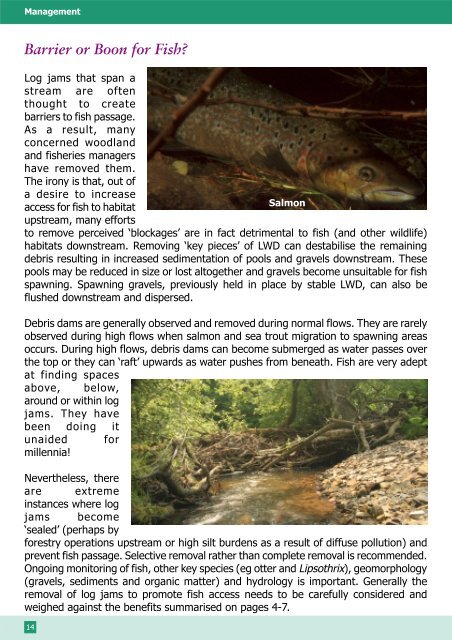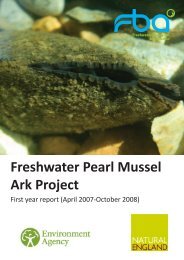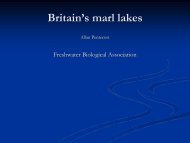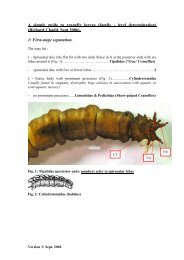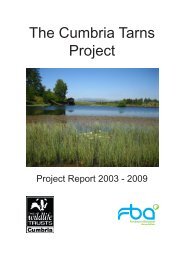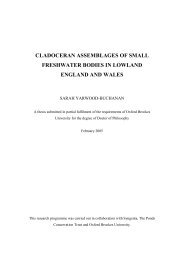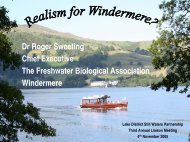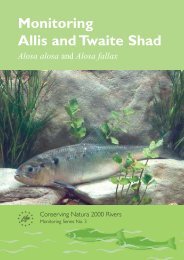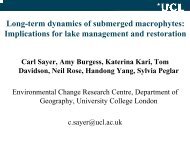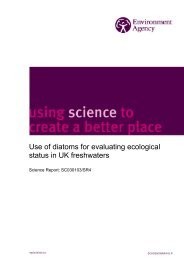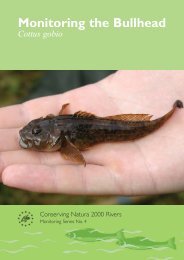Managing Woody Debris - FreshwaterLife
Managing Woody Debris - FreshwaterLife
Managing Woody Debris - FreshwaterLife
Create successful ePaper yourself
Turn your PDF publications into a flip-book with our unique Google optimized e-Paper software.
Management<br />
Barrier or Boon for Fish?<br />
Log jams that span a<br />
stream are often<br />
thought to create<br />
barriers to fish passage.<br />
As a result, many<br />
concerned woodland<br />
and fisheries managers<br />
have removed them.<br />
The irony is that, out of<br />
a desire to increase<br />
access for fish to habitat<br />
upstream, many efforts<br />
Salmon<br />
to remove perceived ‘blockages’ are in fact detrimental to fish (and other wildlife)<br />
habitats downstream. Removing ‘key pieces’ of LWD can destabilise the remaining<br />
debris resulting in increased sedimentation of pools and gravels downstream. These<br />
pools may be reduced in size or lost altogether and gravels become unsuitable for fish<br />
spawning. Spawning gravels, previously held in place by stable LWD, can also be<br />
flushed downstream and dispersed.<br />
<strong>Debris</strong> dams are generally observed and removed during normal flows. They are rarely<br />
observed during high flows when salmon and sea trout migration to spawning areas<br />
occurs. During high flows, debris dams can become submerged as water passes over<br />
the top or they can ‘raft’ upwards as water pushes from beneath. Fish are very adept<br />
at finding spaces<br />
above, below,<br />
around or within log<br />
jams. They have<br />
been doing it<br />
unaided for<br />
millennia!<br />
Nevertheless, there<br />
are extreme<br />
instances where log<br />
jams become<br />
‘sealed’ (perhaps by<br />
forestry operations upstream or high silt burdens as a result of diffuse pollution) and<br />
prevent fish passage. Selective removal rather than complete removal is recommended.<br />
Ongoing monitoring of fish, other key species (eg otter and Lipsothrix), geomorphology<br />
(gravels, sediments and organic matter) and hydrology is important. Generally the<br />
removal of log jams to promote fish access needs to be carefully considered and<br />
weighed against the benefits summarised on pages 4-7.<br />
14


